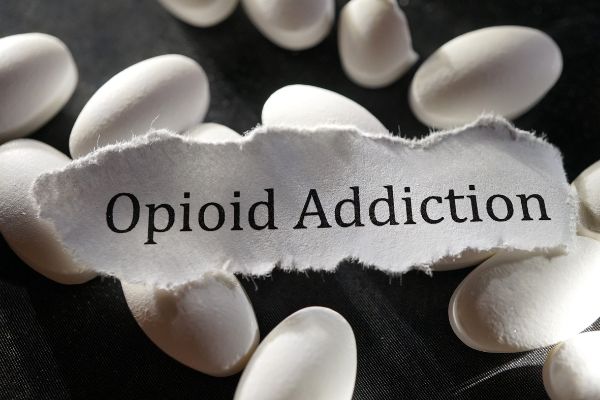People have used opiates to relieve pain and get high ever since opium’s intoxicating properties were first identified thousands of years ago. Individuals who genuinely required pain relief throughout history become dependent on opium-based pharmaceuticals far too frequently. Opioids and opiates come in a variety of forms. Prescription medicines make up the majority of the most addictive medications, and several opiates have been pulled off the market because of their extreme hazard.
The following Opiates are the most addictive:
1. OxyContin
This kind of oxycodone with an extended-release was created to assist persons with chronic pain who required relief for 12 to 24 hours. The drug’s manufacturer, Purdue Pharma, emphasized in its advertising how well this opioid relieves pain, but prescribing it more extensively to treat other types of pain along with other, less effective analgesics contributed to the current opioid abuse pandemic. To get around the extended-release formula, the medication is frequently crushed and snorted, which frequently results in opioid overdoses.
2. Percocet
This brand-name drug, which combines acetaminophen and oxycodone, was intended to treat moderate to severe pain only briefly, for no more than a few months, and for a period of up to six hours. After surgery or a serious injury, a short-term opioid medicine like Percocet is intended to help patients concentrate on their recovery, including physical therapy. Instead, many people who are introduced to opioids like Percocet and others like it become addicted to them and then progress to higher and riskier opioids.
3. Vicodin
Vicodin is another brand-name painkiller intended to relieve moderate to severe pain, often for 4-6 hours, for no longer than a few months. It is a mixture of hydrocodone and acetaminophen, similar to Percocet. Vicodin has led to millions of people struggling with opiate addiction and switching to stronger drugs, much like Percocet did.
4. Methadone
It is one of the longest-acting opioid agonists available. Methadone was used for years in the US to help heroin addicts gradually overcome their addictions and resume normal lives. Many methadone users stayed on the drug for years, going to methadone clinics to get their dose. Like long-acting opioids like fentanyl or OxyContin, the drug is occasionally recommended to manage chronic pain, but it is also one of the most misused substances and is a major cause of overdoses.
5. Fentanyl
This potent narcotic painkiller, which was originally intended for the long-term management of chronic pain, has since been produced in covert labs and sold either in combination with heroin or in its stead, fueling an epidemic of overdose deaths across the country. Fentanyl has an average potency of roughly 80 times that of heroin and is between 50 and 100 times more potent than morphine. People who battle with opioid addiction unintentionally use this medication in place of heroin or another opioid, which is exceedingly risky.
6. Heroin
Heroin, one of the few opioid medications that the Drug Enforcement Administration (DEA) has designated as Schedule I, was originally created from morphine to be a more effective, less addictive pain reliever. Instead, this synthetic drug turned out to be worse, causing overdose deaths and addiction throughout the 19th and early 20th centuries. Heroin quickly attaches to opioid receptors in the brain, producing a quick-acting, potent high. Because the initial effects of heroin wear off so rapidly, those who battle heroin addiction are inclined to take multiple doses throughout the day.
7. Morphine
Morphine, the first opioid painkiller created from opium, is still prescribed to relieve pain in the United States and most of the rest of the globe. It is available under various brand names. The creation of heroin and other opioid analgesics, which have also shown to have a significant potential for addiction, was nonetheless prompted by worries about the addictive properties of morphine, particularly after the Civil War. All opioid drugs—both illegal and legally prescribed—are derived from morphine.
Opioid Addiction Treatment
Opiates are drugs that, when given by a doctor, are intended to help with the treatment of severe pain. They are frequently used following a catastrophic accident or surgery, as well as occasionally in cases of persistent pain or diseases like cancer. Opiates cause the same reactions that are brought on when you do something your body and brain find pleasurable, like eating, but they are considerably more apparent. If you use opiates frequently, your brain begins to change in such a way that using them makes you feel normal while not using them makes you feel strange. Depending on the severity of Opioid addiction, the treatment options include:
- Medical detox- To supervise a safe withdrawal
- Outpatient Rehab- For patients who want to return home after treatment
- Inpatient Rehab- For patients who heal better when being cut off from all triggers
- Medicated-Assisted Treatment- Using therapies and medication like Suboxone together to achieve long-term sobriety.
- 12 Step Recovery- Find an NA meeting near you
Parting Words…
Among the opiates are heroin and morphine. These medicines affect the reward region of the brain, which governs how your body experiences pleasure and related emotions. Opiates duplicate and enhance your body’s inherent feel-good mechanisms. Opioids have a tendency to slow down some of the body’s core processes, including the respiratory system, in extremely high doses.








